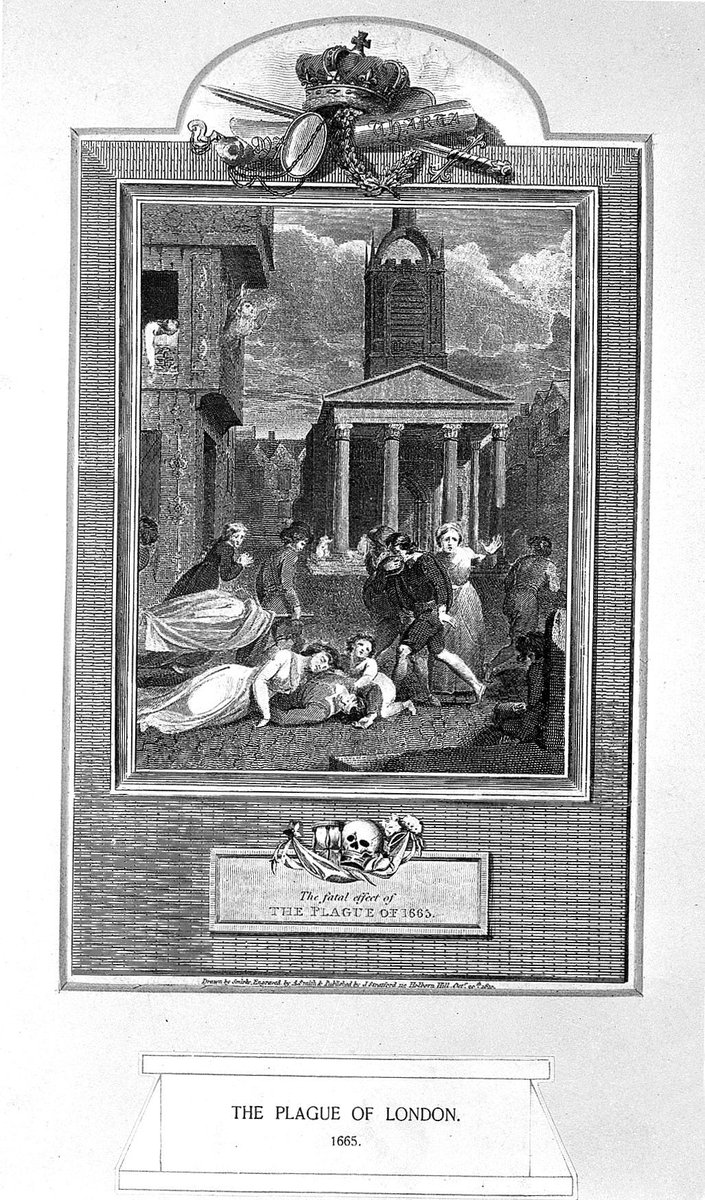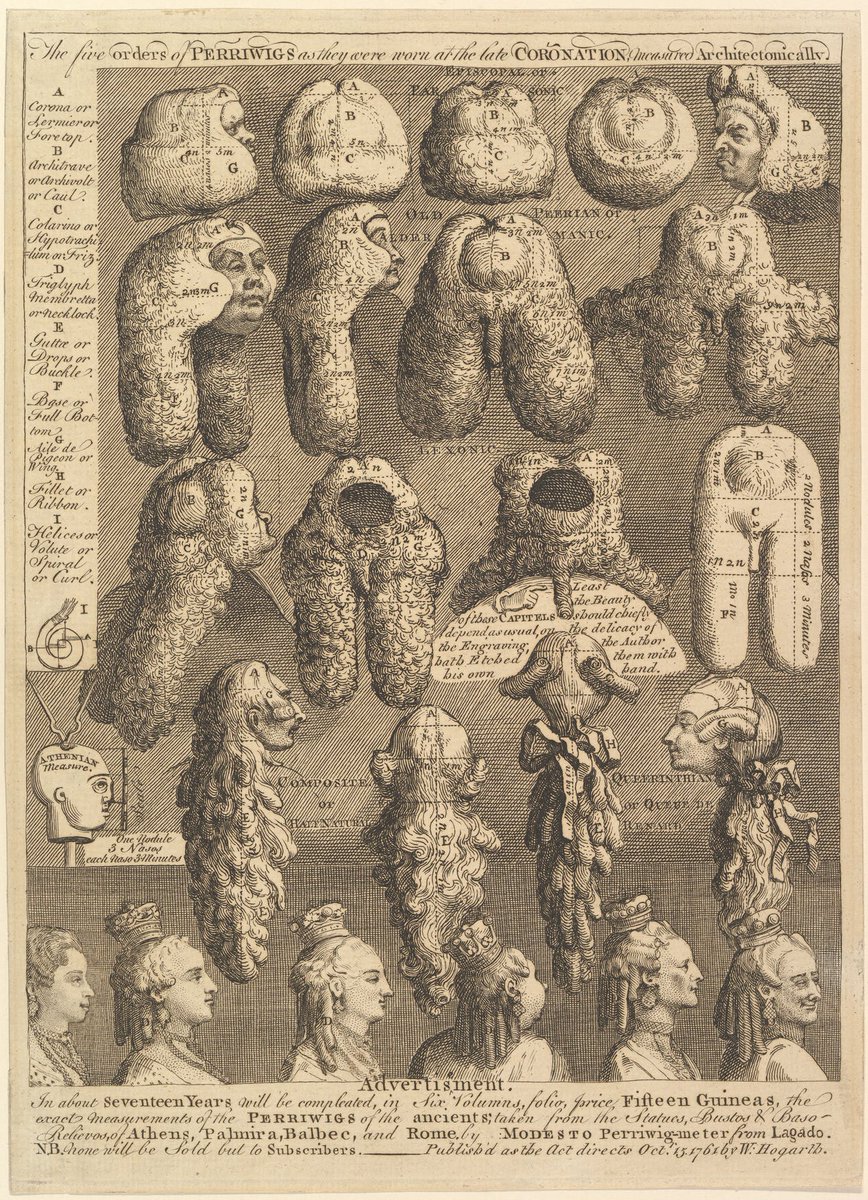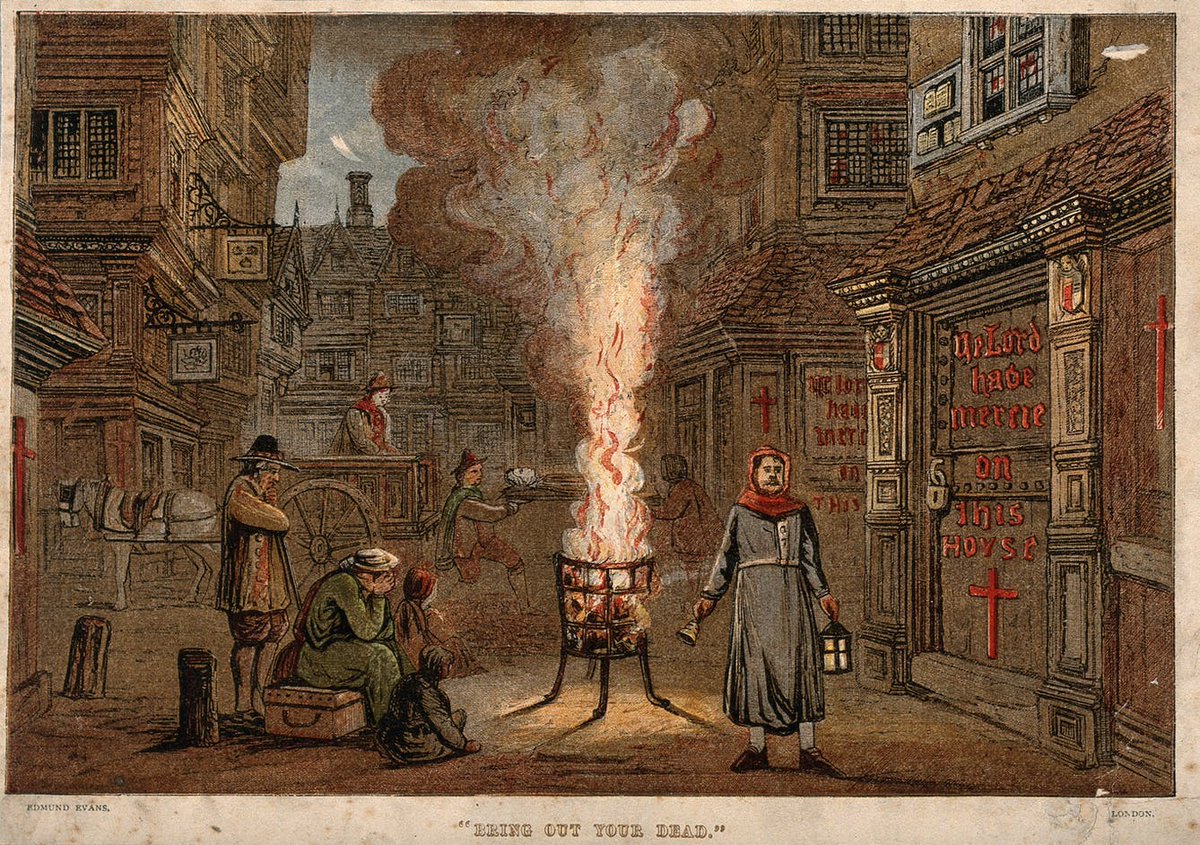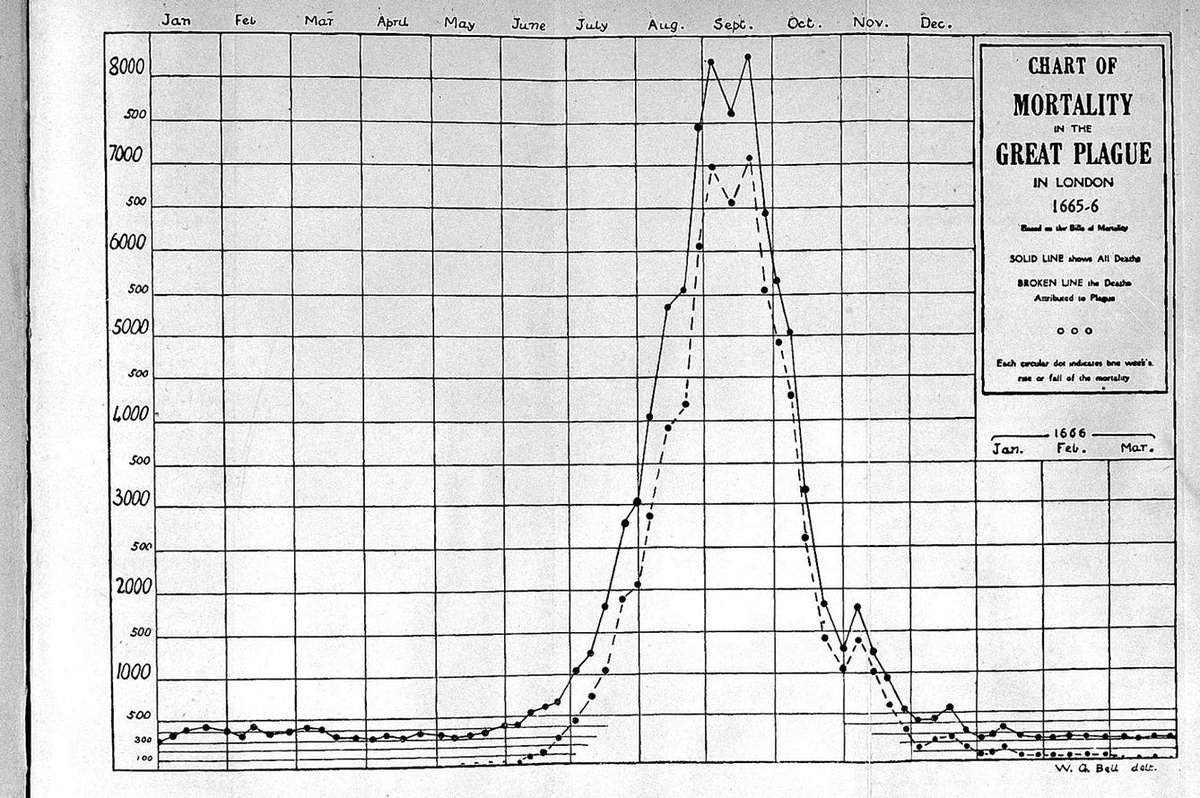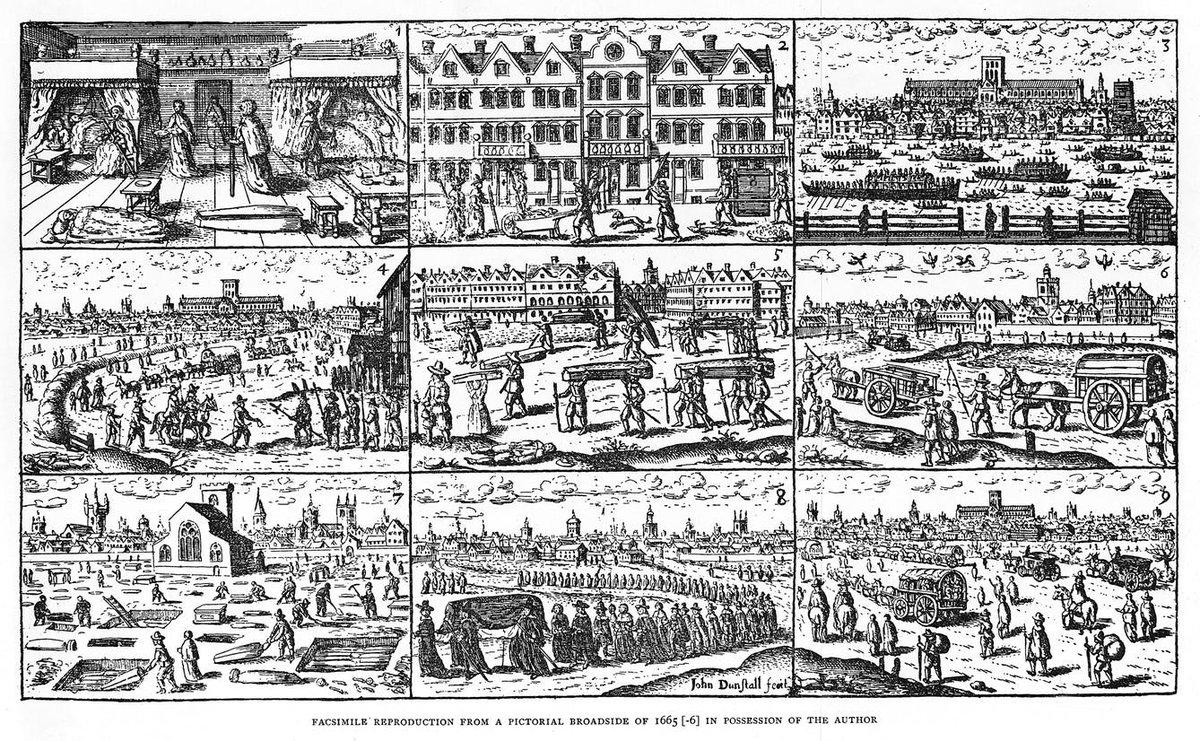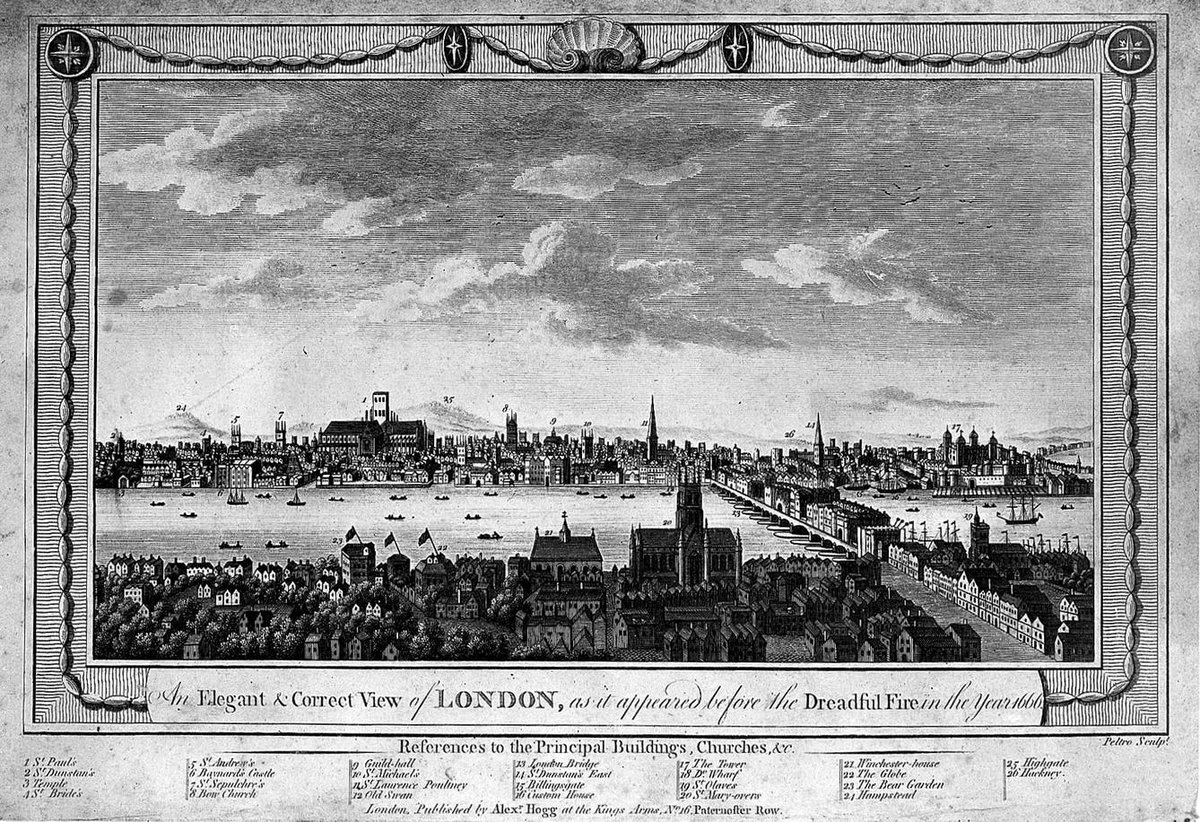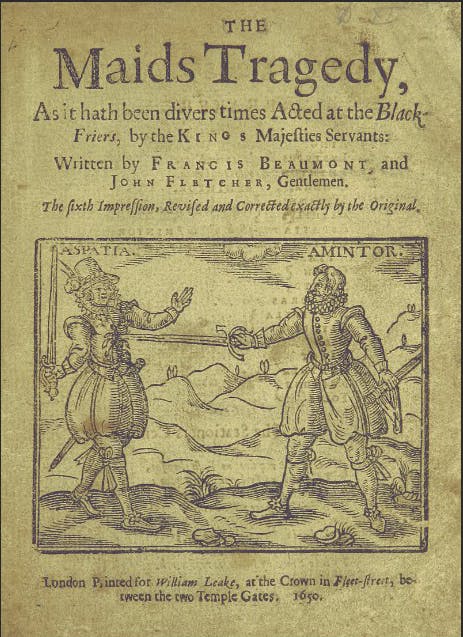Through its long history, London has survived some enormous epidemics. During the 1665 Great Plague of London, the city burned, shops closed and the streets emptied. Read Samuel Pepys’s account of how the city pulled through. [THREAD]
The first major plague outbreak in Europe was in the 14th century. It peaked between 1347 and 1351 but some places, like Florence, did not fully recover their pre-1300 population levels until the 19th century. In early 1665 a new outbreak hit St Giles, near today& #39;s Covent Garden.
To try to stop the spread of plague, a team of watchmen drew a red cross on the doors of houses under quarantine. Anyone found to have escaped quarantine was treated as a felon and could face a death sentence.
On 7 June 1665 Pepys wrote of the horror of encountering the red crosses: “This day, much against my Will, I did in Drury lane see two or three houses marked with a red cross upon the doors, and ‘Lord have mercy upon us’ writ there – which was a sad sight to me...”
The quarantine did little to stop the spread of the plague. On 26 June Pepys writes in his diary that “the plague encreases mightily”. One month later, on 20 July, he laments: “But, Lord! To see how the plague spreads.” London was facing an epidemic.
By August, burials began to take place during the day, rather than just at night. Pepys notes on 12 August: “The people die so, that now it seems they are fain [obliged] to carry the dead to be buried by daylight, the nights not sufficing to do it in..."
Many people thought the plague was caused by bad air quality, which is why the infected were instructed to go out for air during the night-time curfew.
The epidemic emptied London’s streets. The nobility fled to the country, and the King and his court retreated to Salisbury. On 16 August 1665, Pepys writes that “two shops in three, if not more, [are] generally shut up”.
Later in the year, on 16 October, Pepys laments the eerie desolation of the city: “But, Lord! How empty the streets are and melancholy, so many poor sick people in the streets...and so many sad stories overheard as I walk, everybody talking of this dead, and that man sick...”
The public were both saddened by the increase in cases and fearful that the number of deaths had been under-reported. On 31 August Pepys writes: “Thus this month ends, with great sadness upon the public through the greatness of the plague, everywhere through the Kingdom almost."
"Every day sadder and sadder news of its encrease. In the City died this week 7,496; & of them 6,102 of the plague. But it is feared that the true number of the dead this week is near 10,000 partly from the poor that cannot be taken notice of through the greatness of the number."
Periwigs were very fashionable, and ever the trendy young professional, Pepys had his head shaved and first wig fitted in 1663. Two years later, Pepys noted that the plague was likely to affect periwig sales: “It is a wonder what will be the fashion after the plague is done..."
"as to periwigs, for nobody will dare to buy any haire for fear of the infection - that it had been cut off of the heads of people dead of the plague.” But for Pepys, fashion trumped fear. On 3 September 1665 he put on a “new periwig”, even though “the plague was in Westminster."
On 6 September, Pepys writes: “I looked into the street and saw fires burning in the street, as it is through the whole city by the Lord Mayor’s order.” The fires were thought to have a purifying effect on the air quality and were thought to rid the city of the plague.
On 15 September 1665 Pepys describes meeting his friend Captain Cocke after work, and of them having “drank a cup of good drink”. While they drank, London faced the peak of the epidemic.
Pepys was keenly aware of the numbers – his diary is full of detailed notes on numbers of cases and deaths. In fact, he sees the increase in deaths as justifying his drinking: “I am fain to allow myself [alcohol] during this plague time…my physician being dead.”
By the autumn it became hard to imagine life without the plague. Bodies piled up on carts. On 7 October Pepys writes of how he “comes close by the bearers with a dead corpse of the plague; but Lord, to see what custom is, that I am come almost to think nothing of it”.
Mercifully, towards the end of the year the number of cases began to drop. On New Year’s Eve, Pepys writes: “Now the plague is abated almost to nothing… to our great joy, the town fills apace, and shops begin to be open again. Pray God continue the plague’s decrease.”
Pepys’s prayers were answered. In February 1666 London was deemed safe enough for the king and his court to return. Life slowly resumed and Pepys finally made it back to the theatre in late October.
An avid reader of playscripts, Pepys had been deprived of the opportunity since 5 June 1665, when mass entertainment like theatres and football matches were ordered to cease. Ironically, a minor illness, combined with bad acting and poor acoustics, meant he didn’t even enjoy it!
Pepys and the plague was brought to you by @suryabowyer, a writer and educator from London https://wellcomecollection.org/articles/Xn4chRIAAK03rFsj">https://wellcomecollection.org/articles/...

 Read on Twitter
Read on Twitter![Through its long history, London has survived some enormous epidemics. During the 1665 Great Plague of London, the city burned, shops closed and the streets emptied. Read Samuel Pepys’s account of how the city pulled through. [THREAD] Through its long history, London has survived some enormous epidemics. During the 1665 Great Plague of London, the city burned, shops closed and the streets emptied. Read Samuel Pepys’s account of how the city pulled through. [THREAD]](https://pbs.twimg.com/media/EUbrtPrXQAIv9n1.jpg)
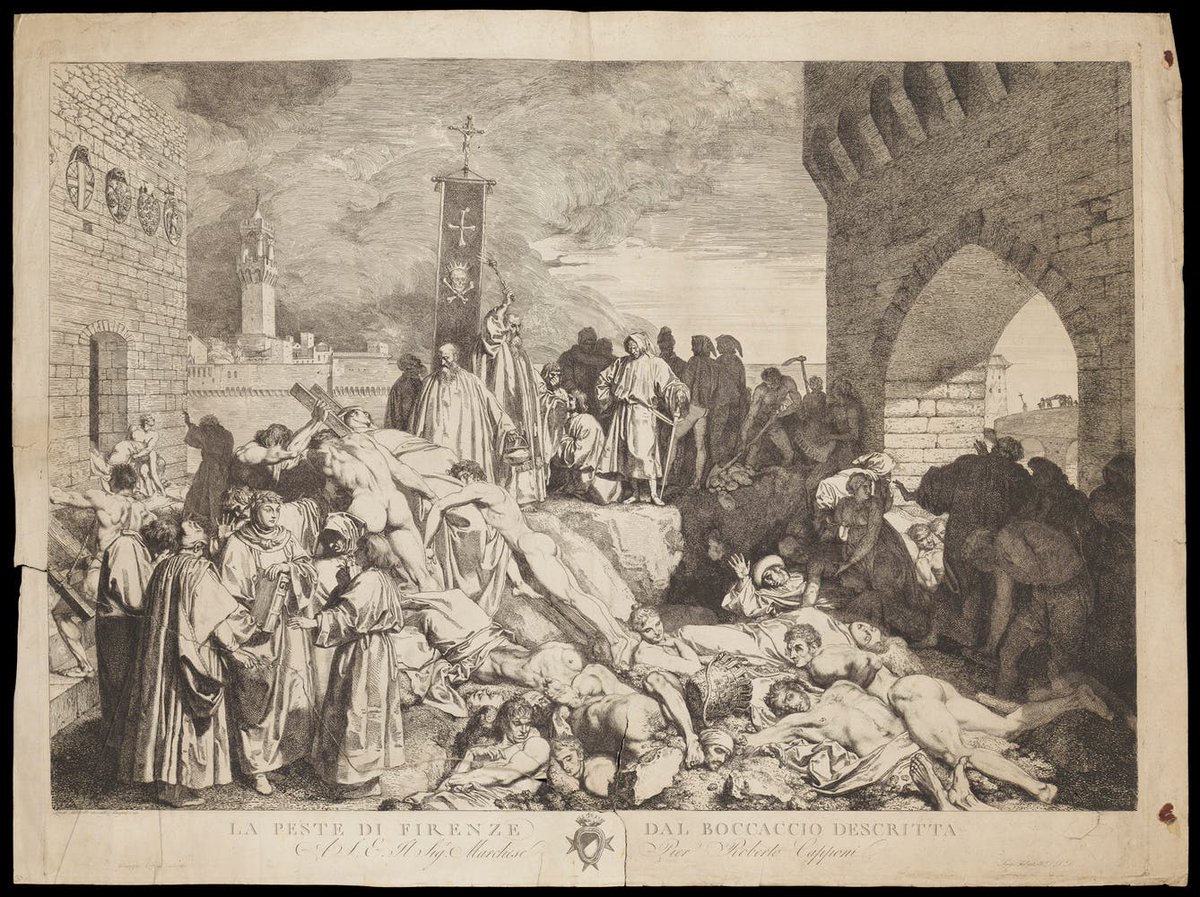
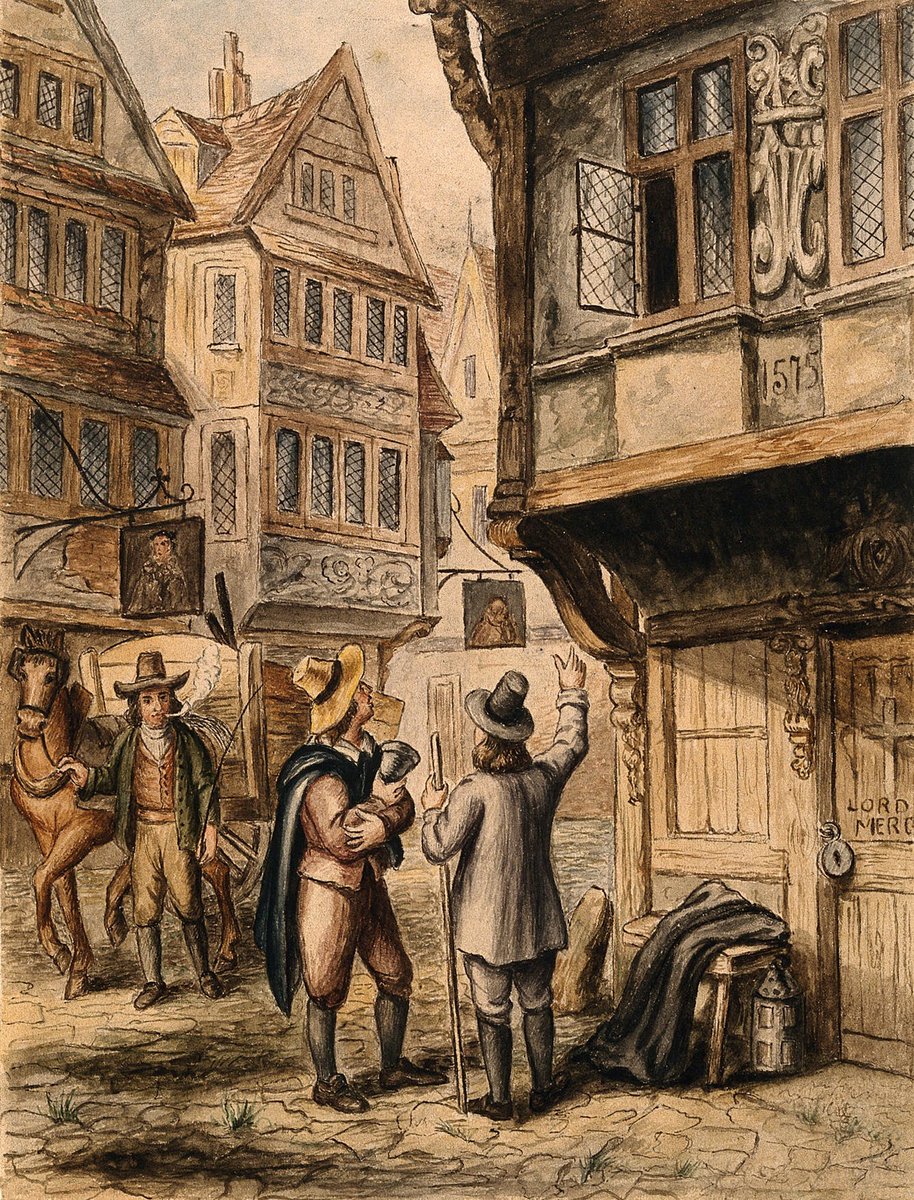
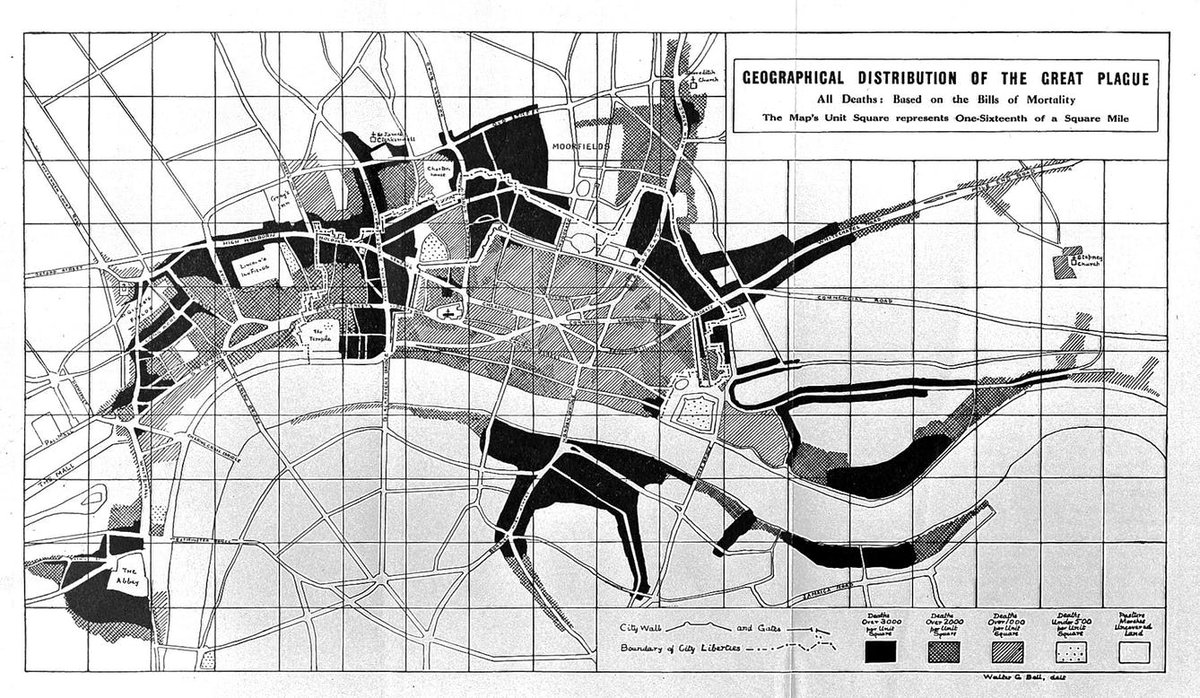
![By August, burials began to take place during the day, rather than just at night. Pepys notes on 12 August: “The people die so, that now it seems they are fain [obliged] to carry the dead to be buried by daylight, the nights not sufficing to do it in..." By August, burials began to take place during the day, rather than just at night. Pepys notes on 12 August: “The people die so, that now it seems they are fain [obliged] to carry the dead to be buried by daylight, the nights not sufficing to do it in..."](https://pbs.twimg.com/media/EUbsD15XsAIH2W6.jpg)
![The epidemic emptied London’s streets. The nobility fled to the country, and the King and his court retreated to Salisbury. On 16 August 1665, Pepys writes that “two shops in three, if not more, [are] generally shut up”. The epidemic emptied London’s streets. The nobility fled to the country, and the King and his court retreated to Salisbury. On 16 August 1665, Pepys writes that “two shops in three, if not more, [are] generally shut up”.](https://pbs.twimg.com/media/EUbsCQLWkAAfvB5.jpg)
